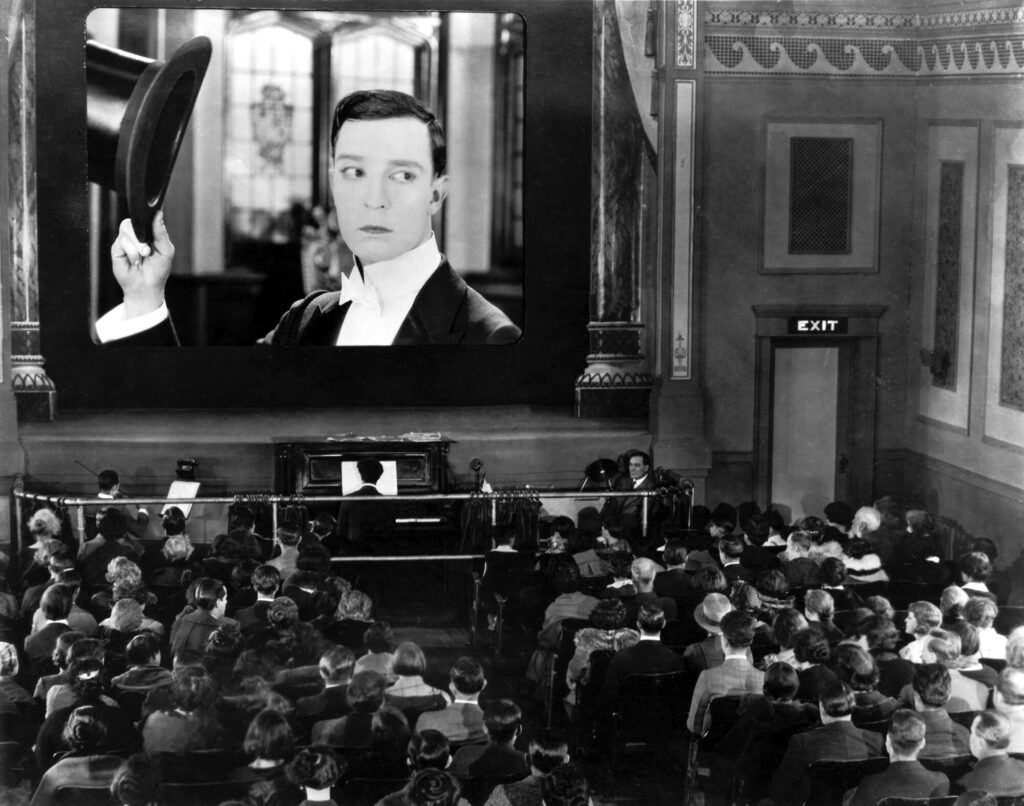
* * *
“A page from the history and lives of the most bloodthirsty pirates who ever infested the southern seas”: So reads the introductory title card for “The Black Pirate” (1926), an elaborately configured swashbuckler starring the then reigning King of Hollywood, Douglas Fairbanks. A second placard lists an inventory of attractions to follow, including “bleached skulls,” “marooning,” and “desperate men.” Whereupon we learn that “it was the custom of these pirates to subdue their prey, loot the ship, bind their captives and blow them up.”
All of which is made considerably more dramatic by the typesetter’s liberal use of italics and capital letters. Once the text gives way to the action on hand, things turn grisly. No sooner have we met the dastardly pirate captain than he summarily orders an underling to disembowel a prisoner who has just swallowed a valuable ring. The violence happens off-screen, but soon enough the captain is bestowed with his bloodied prize. Pirates — they get stuff done.
“The Black Pirate” is the premiere attraction of “To Save and Project,” the Museum of Modern Art’s 20th Annual International Festival of Film Preservation. Organized by a curator in the Department of Film, Joshua Siegel, who worked along with Francisco Valente and Cindi Rowell, the series features more than 80 films from 18 countries. Many of the pictures have been restored to their original conditions — as is the case with “The Black Pirate,” which is keyed to an early example of Process Two Technicolor.
Alexander Payne will introduce the film on January 11 and it should be interesting to hear what the director of “Election,” “Sideways,” and “Nebraska” has to say about a picture that is, in many ways, antithetical to his own aesthetic. “The Black Pirate” is a straight on rip-snorter — a tale of family honor and romantic gallantry keyed to Fairbanks’s acrobatic abilities, impressive pecs, and pearly whites. We wouldn’t expect Paul Giamatti, star of Mr. Payne’s current release, “The Holdovers,” to slide down the length of a ship’s sail with only a knife, a smile, and his bravado at hand.
At least, not without a considerable amount of CGI. Which isn’t to say that “The Black Pirate” doesn’t have special effects. If the Fairbanks stunt is impressive, the climactic underwater scene is no less impressive for its cinematic trickery. Should you want more of the latter, “Sherlock Jr.” (1924) is also on the docket, a gag-filled reflection on the craft of filmmaking in which Buster Keaton’s powers of invention are at their peak. Perfection is achieved in a mere 47 minutes.

* * *
Among the finds of “To Save and Project” is Narcisa Hirsch, a 95-year-old Berliner who has long made Argentina her base of operations. “It’s almost criminal,” the scribes at MoMA note, that she “isn’t a household name.” A caveat adds that Ms. Hirsch’s work will best be appreciated by those with a taste for Performance Art, “Happenings,” and other trappings of post-Conceptualist culture. The self-described “famous unknown filmmaker” sounds good and prickly: “The theorists who come after my work is done are the ones who find things I have never seen or heard in it before.” Tell it like it is, Ms. Hirsch.
Those who think Ms. Hirsch’s work sounds interesting may want to take a chance on seeing “Bitch” (1965), an unseen work by Andy Warhol that riffs on “Who’s Afraid of Virginia Woolf?”; it will be paired with Mike Nichols’s 1965 screen adaptation of the Edward Albee play starring Elizabeth Taylor and Richard Burton. Also included at MoMA are a screen test of Adele Astaire, Fred’s sister and a significant talent in her own right, and what remains of an experimental film created by the painters Robert and Sonia Delaunay.
On the evening of January 27, the bassist and co-founder of DEVO, Gerald Casale, will be talking with MoMA’s head of restoration, Peter Conheim, about the group’s forays into film. DEVO’s interest in the latter came before the advent of MTV: Video was part of the group’s hermetic strategies from the get-go. Among the finds at MoMA will be footage of DEVO’s career-making appearance at Max’s Kansas City in 1977 — reason enough to don your energy dome and head to Manhattan’s 53rd Street.
(c) 2024 Mario Naves
This article was originally published in the January 8, 2024 edition of “The New York Sun.”